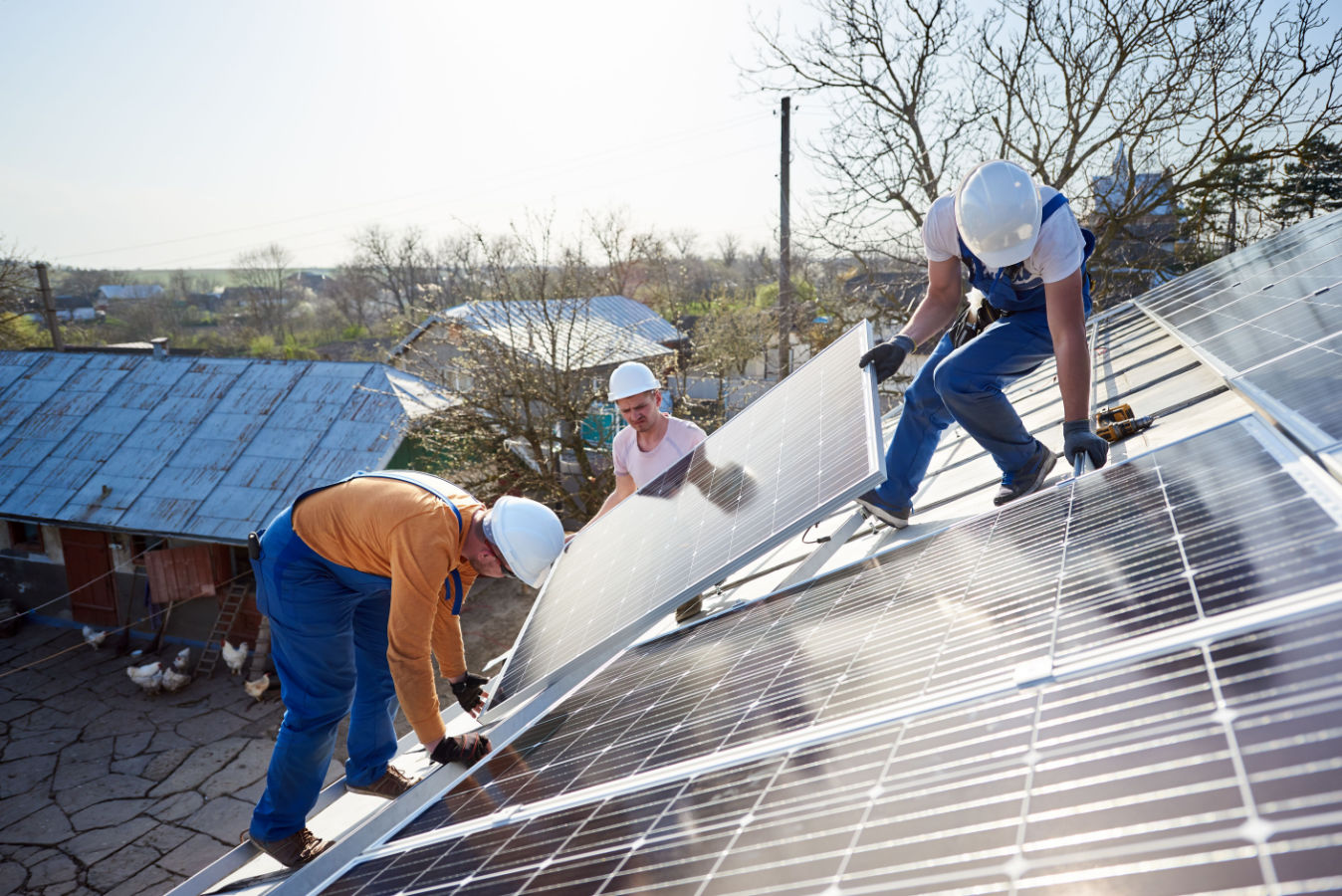Sep 9, 2021
New DOE Study Says Solar Could Provide 40% of US Power by 2035
Solar energy could account for up to 40% of the US's electricity supply by 2035, according to a new report by the Solar Energy Technologies Office and the National Renewable Energy Laboratory. The report models the deployment of solar necessary for a decarbonized grid, which would require solar deployment to grow four times its current rate to reach 1,000 GWac of solar deployed by 2035. The study also found that electricity prices wouldn't increase through 2035, and clean energy deployment could employ as many as 500,000-1.5 million people in solar jobs by 2035.

Yesterday, the US Department of Energy Solar Energy Technologies Office (SETO) and the National Renewable Energy Laboratory (NREL) released the Solar Futures Study—a report that explores solar energy’s role in transitioning to a carbon-free electric grid. Most notably, the report concludes that solar could account for as much as 40% of the nation’s electricity supply by 2035. Today, solar power generates just 3% of US electricity. In order to make this leap, the nation would need aggressive cost reductions, supportive policies, and large-scale electrification.
The Solar Futures Study modeled the deployment of solar necessary for a decarbonized grid. Preliminary modeling shows that decarbonizing the entire energy system could result in as much as 3,000 GW of solar due to increased electrification.
More specifically, solar deployment will need to grow by an average of 30 gigawatts alternating current (GWac) each year between now and 2025 and ramp up to 60 GW per year between 2025 and 2030—four times its current deployment rate—to total 1,000 GWac of solar deployed by 2035. By 2050, solar capacity would need to reach 1,600 GWac to achieve a zero-carbon grid with enhanced electrification of end uses (such as motor vehicles and building space and water heating). Preliminary modeling shows that decarbonizing the entire U.S. energy system could result in as much as 3,200 GWac of solar due to increased electrification of buildings, transportation, and industrial energy and production of clean fuels.
The Solar Futures Study is the third in a series of vision studies from SETO and NREL, preceded by the SunShot Vision Study (2012) and On the Path to SunShot (2016). While the previous studies focused on the impacts of low-cost solar technologies on the economy, this study dives into solar energy’s role in a decarbonized grid and provides analysis of future solar technologies, the solar workforce, and how solar energy might interact with other technologies like storage.
Key Findings
Following are key findings from the Solar Futures Study.
- With continued technological advances, electricity prices do not increase through 2035. Ninety-five percent decarbonization of the electric grid is achieved in 2035 without increasing electricity prices because decarbonization and electrification costs are fully offset by savings from technological improvements and enhanced demand flexibility.
- Achieving decarbonization requires significant acceleration of clean energy deployment, which will employ as many as 500,000–1.5 million people in solar jobs by 2035. Compared with the approximately 15 GW of solar capacity deployed in 2020, annual solar deployment is 30 GW on average in the early 2020s and grows to 60 GW on average from 2025 to 2030. Similarly substantial solar deployment rates continue in the 2030s and beyond. Deployment rates accelerate for wind and energy storage as well.
- Storage, transmission expansion, and flexibility in load and generation are key to maintaining grid reliability and resilience. Storage capacity expands rapidly, to more than 1,600 GW in 2050. Small-scale solar, especially coupled with storage, can enhance resilience by allowing buildings or microgrids to power critical loads during grid outages. In addition, advances in managing distributed energy resources, such as rooftop solar and electric vehicles, are needed to efficiently integrate these resources into the grid.
- Expanding clean electricity supply yields deeper decarbonization. Electricity demand grows by about 30% from 2020 to 2035, owing to electrification of fuel-based building demands (e.g., heating), vehicles, and industrial processes. Electricity demand increases by an additional 34% from 2035 to 2050. By 2050, all these electrified sectors are powered by zero-carbon electricity, and the electrification growth results in an emissions reduction equivalent to 155% of 2005 grid emissions.
- Land availability does not constrain solar deployment. In 2050, ground-based solar technologies require a maximum land area equivalent to 0.5% of the contiguous U.S. surface area. This requirement could be met in numerous ways, including the use of disturbed or contaminated lands unsuitable for other purposes.
- The benefits of decarbonization far outweigh additional costs incurred. Cumulative power system costs from 2020 to 2050 are $562 billion (25%) higher, which includes the costs of serving electrified loads previously powered through direct fuel combustion. However, avoided climate damages and improved air quality more than offset those additional costs, resulting in net savings of $1.7 trillion.
- Challenges must be addressed so that solar costs and benefits are distributed equitably. Solar deployment can bring jobs, savings on electricity bills, and enhanced energy resilience. Various interventions—financial, community engagement, siting, policy, regulatory, and resilience measures—can improve equity in rooftop solar adoption. Additional equity measures can address the distribution of public and private benefits, the distribution of costs, procedural justice in energy-related decision making, the need for a just workforce transition, and potential negative externalities related to solar project siting and disposal of solar materials.
On the DOE website, you can also explore interactive diagrams for the study’s results and view frequently asked questions.





